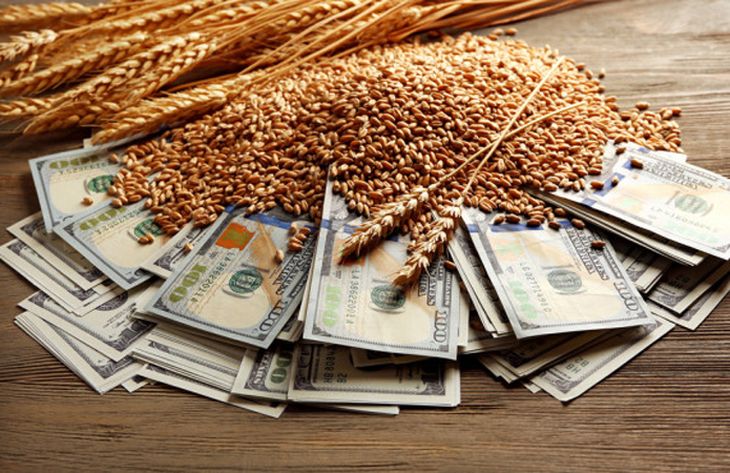Global Grain Price Predictions for 2025: Wheat, Barley, and Corn

As the global demand for staple grains continues to rise, understanding the expected price trends for wheat, barley, and corn in 2025 is crucial for farmers, investors, and policymakers. The grain market, however, is influenced by a mix of factors, including geopolitical events, weather conditions, and export policies. This article delves into the forecasted prices for these key grains, the driving forces behind the market, and how Ukraine, a major grain exporter, could impact global prices.
Wheat remains a staple crop with a highly volatile market due to its sensitivity to geopolitical tensions, extreme weather, and policy changes. In 2025, wheat prices are expected to fluctuate within a range of $240 to $280 per metric ton, driven by several critical factors:
1) Geopolitical Instability: Ongoing conflicts or diplomatic tensions in major wheat-exporting countries, like Russia and Ukraine, could significantly affect supply chains. Any disruptions in the Black Sea region, a critical export hub, could lead to immediate price spikes. You can monitor prices on the Ukrainian market here https://ukragroconsult.com/en/grain-prices/.
2) Weather Patterns: Climate change continues to affect wheat production, particularly in the Northern Hemisphere. Droughts or heavy rains during the growing season could limit output, pushing prices higher. Conversely, favorable weather conditions in North America, the EU, and Australia might help stabilize prices.
3) Global Demand: The rising demand for wheat, particularly in the Middle East, Asia, and Africa, will likely maintain upward pressure on prices. Additionally, the use of wheat in animal feed could contribute to higher demand, especially in regions with declining corn production.
Barley, primarily used for animal feed and beer production, is expected to experience a more stable price trend in 2025, ranging from $220 to $260 per metric ton. The main factors shaping the barley market include:
1) Feed Demand: The demand for barley as a substitute for corn in livestock feed will remain a significant price determinant. If corn prices increase sharply, barley may serve as a more cost-effective alternative, leading to increased demand and higher prices.
2) Brewing Industry Growth: Global beer production is anticipated to recover post-pandemic, which could boost barley demand. The increased need for malting barley could contribute to moderate price increases, particularly in Europe and Asia.
3) Production Levels: Countries like Canada, Australia, and Ukraine are the major barley exporters. While favourable weather and increased planting areas could boost supply and moderate prices, any production shortfalls due to climate variability could create supply constraints and lift prices.
Corn is one of the most traded commodities globally, driven by its use as food, animal feed, and biofuel. Corn prices in 2025 are projected to range between $210 and $250 per metric ton, influenced by the following factors:
1) Biofuel Policies: The demand for corn-based ethanol in countries like the U.S. and Brazil will remain a significant factor. Any changes in biofuel mandates or incentives could directly impact corn prices. In 2025, a potential increase in biofuel production could drive corn demand and contribute to higher prices.
2) Weather Conditions: As with wheat, corn yields are highly sensitive to weather conditions. The U.S., China, and Brazil, as the largest producers, could see significant yield variations depending on rainfall patterns, droughts, or heatwaves.
3) Supply Chain Dynamics: While corn exports from the U.S., Brazil, and Argentina will play a vital role in the global supply chain, the availability of corn from Ukraine could also influence the market. Disruptions in exports from the Black Sea region could contribute to global supply constraints and subsequent price increases.
Ukraine is a major player in the global grain market, consistently ranking among the top exporters of wheat, barley, and corn. In 2025, the country’s role will remain crucial, particularly for the European and Middle Eastern markets.
1) Wheat and Barley Exports: Ukraine’s contribution to the wheat and barley markets is expected to influence regional prices. If the country’s export capacity is stable, it could help moderate price spikes in these markets. However, any geopolitical tensions or infrastructural challenges could reduce exports, tightening supply and driving prices upward.
2) Corn Supply: Ukraine’s corn exports also play a significant role in the European market. A strong harvest and efficient logistics could help stabilize global corn prices. Conversely, disruptions in planting, harvesting, or shipping could lead to higher prices, especially in regions heavily reliant on Ukrainian corn.
The grain market in 2025 will likely experience moderate price increases, primarily due to geopolitical factors, climate change impacts, and shifts in global demand. Wheat, barley, and corn prices will be shaped by both global supply dynamics and regional influences, with Ukraine continuing to be a pivotal player. As the world becomes more interconnected, fluctuations in Ukrainian exports could have widespread implications, particularly for European and Middle Eastern markets. For stakeholders in the grain industry, close monitoring of geopolitical developments, weather forecasts, and policy changes will be essential for navigating the complex market landscape in 2025.
For almost 30 years of expertise in the agri markets, UkrAgroConsult has accumulated an extensive database, which became the basis of the platform AgriSupp.
It is a multi-functional online platform with market intelligence for grains and oilseeds that enables to get access to daily operational information on the Black Sea & Danube markets, analytical reports, historical data.
You are welcome to get a 7-day free demo access!!!
Read also
Write to us
Our manager will contact you soon



